Two-month longitudinal study of mechanical properties of absorbable sutures used in orthopedic surgery
- PMID: 27729082
- PMCID: PMC5059988
- DOI: 10.1186/s13018-016-0451-5
Two-month longitudinal study of mechanical properties of absorbable sutures used in orthopedic surgery
Abstract
Background: This is the first study assessing the properties of large-diameter degradable sutures relevant for orthopedic applications over the course of in vitro incubation for 2 months. The data we present here provide guidance to the orthopedic surgeon in predicting the long-term performance of suture materials used everyday in surgical practice.
Methods: Five different absorbable (Vicryl, Maxon, Monocryl, PDS II, Vicryl rapide) and one non-absorbable (Ethibond) suture materials were tested. Measurements were made at five time points during the 56 days of incubation under physiological conditions (37.0 ± 0.02 °C; pH 7.4 ± 0.2). The following variables were recorded: load to failure, strain at maximal load as elongation normalized to original length, stiffness as the ratio of load to displacement on the linear proportion of the stress strain curve, and hysteresis as area under the curve of the stress strain curve.
Results: Vicryl was the strongest fiber on day 0 (195 N); however, by day 42, the tensile strength of the suture reduced to 14 N. Between days 14 and 28, PDS II (171 N) and Maxon (182 N) sustained the highest loads. Monocryl (p = 0.003) and Maxon (p < 0.001) showed an increasing strain with time, whereas Vicryl (p = 0.002) and Vicryl rapide (p = 0.007) revealed an increasing material stiffness. Furthermore, both Vicryl (p = 0.053) and Monocryl (p < 0.001) had an increasing hysteresis with ongoing degradation. Maxon, PDS II, and Ethibond showed stable material properties during the 2 months.
Conclusions: The three absorbable sutures Vicryl, PDS II, and Maxon could sustain higher loads during the first 2 weeks than the non-absorbable Ethibond. Unexpectedly, Maxon and PDS II maintained their elastic properties in spite of their proceeding degradation and loss of tensile strength.
Keywords: Absorbable fiber; Degradation; In vitro; Material properties; Orthopedic surgery; Suture.
Figures
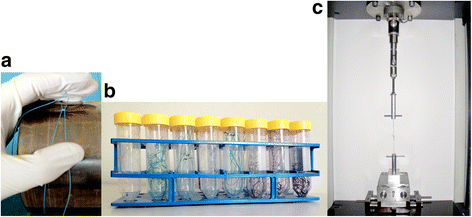
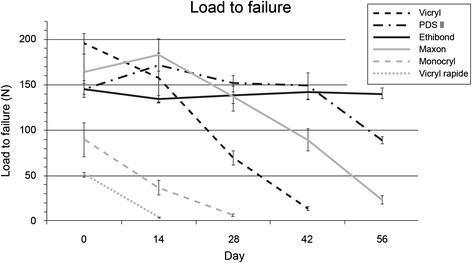
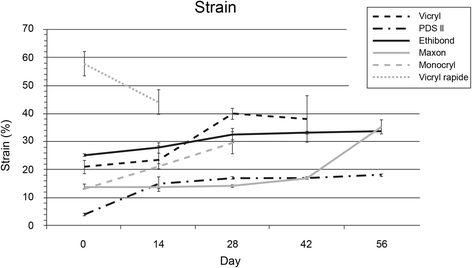
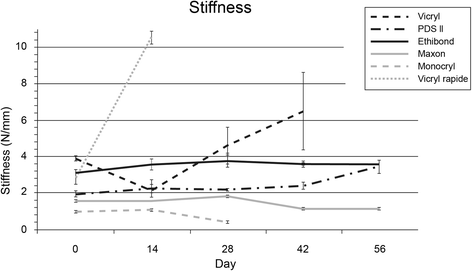
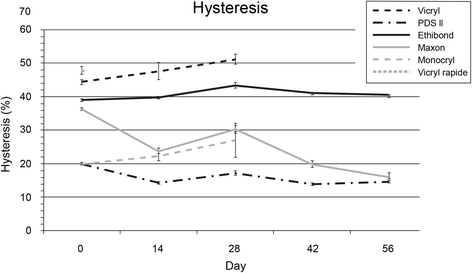
References
-
- Gerber C, Schneeberger AG, Perren SM, Nyffeler RW. Experimental rotator cuff repair. A preliminary study. J Bone Joint Surg Am. 1999;81(9):1281–1290. - PubMed
MeSH terms
Substances
LinkOut - more resources
Full Text Sources
Other Literature Sources
Miscellaneous

